Exploring Splatoon for the Wii U: An In-Depth Analysis
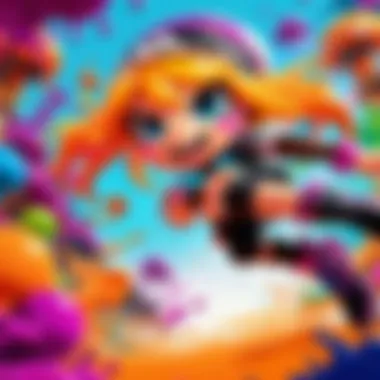

Intro
The world of gaming has continually evolved, with distinct titles leaving profound impacts on their respective platforms. Splatoon for the Wii U represents a pivotal moment in Nintendo's history, introducing players to an engaging blend of shooting and strategy in a vibrant, ink-splattered environment. This analysis aims to deconstruct various aspects of the game, including its technical specifications and gameplay mechanics, to better understand its significance within the gaming culture.
Technical Specifications
Detailed Product Specs
Splatoon was released on May 28, 2015, by Nintendo exclusively for the Wii U. The game is known for its unique take on the multiplayer shooter genre. It employs a colorful aesthetic with cartoonish visuals. The core gameplay revolves around Inklings, characters that can transform between humanoid and squid form. This duality offers unique movement options and strategic depth in competitive play.
Product specifications include:
- Platform: Wii U
- Developer: Nintendo EPD
- Engine: Proprietary engines of Nintendo
- Mode: Single-player and Multiplayer options available
Performance Metrics
Splatoon runs at a stable 720p resolution in most modes, and it generally maintains a smooth frame rate of 30 frames per second. Despite the constraints of the Wii U hardware, it manages to deliver a visually appealing experience.
Compatibility Information
The game is solely compatible with Wii U hardware. No version has been released for other consoles or platforms, making the Wii U the only option for players wishing to experience Splatoon. Additionally, it offers online play features that require an active Nintendo Network ID.
Gameplay Mechanics
Splatoon simplified complex shooter mechanics with its engaging player roles and weapon choices. Players must cover the map in their team's ink while defeating opponents. This unique strategy makes territory control central to the game's competitive aspects.
Cultural Impact
The impact of Splatoon on gaming culture has been noteworthy. It introduced a new visual style and gameplay dynamic, which resonated with players of different ages. The game's success led to merchandise, animated shorts, and a strong community presence on platforms such as Reddit.
"Splatoon revitalized interest in the Wii U, showcasing that innovative gameplay can attract both casual and serious gamers."
Competitive Aspects
The competitive scene around Splatoon grew rapidly after its launch. Players formed teams and participated in various tournaments. Nintendo also promoted its own events, further solidifying the title's place in eSports.
Updates and Support
Nintendo has provided consistent updates post-launch to balance gameplay and introduce new features, keeping the community engaged. These updates typically included new weapons, maps, and game modes.
Product Comparisons
While there's no direct competitor solely focused on the same unique mechanics, titles like Team Fortress 2 and Overwatch brought similar appeal. However, they differ in aesthetics and core gameplay strategies.
Feature Comparisons
- Splatoon: Unique ink mechanics, vibrant art style
- Team Fortress 2: Class-based gameplay, cartoonish visuals
- Overwatch: Character abilities, objective-based gameplay
User Experience Breakdown
Players often highlight the engaging community, colorful graphics, and innovative gameplay as key strengths of Splatoon. Many appreciate the distinctiveness it brought to the genre, contrasting with more traditional shooters.
Epilogue
In sum, Splatoon for the Wii U is not merely a game but a cultural phenomenon that redefined expectations for a shooter title on a console not renowned for such genres. Through its unique mechanics and vibrant community, it has established a notable legacy that continues to influence newer titles in the gaming industry.
Prologue to Splatoon
Understanding Splatoon for the Wii U requires a closer examination of its place within the gaming landscape. This section serves as a gateway to the in-depth analysis of the game, highlighting its significance and unique elements.
Overview of the Game
Splatoon is a team-based third-person shooter developed by Nintendo, prominently released for the Wii U in 2015. Unlike traditional shooters that often focus on realism and militaristic themes, Splatoon presents a vibrant world where players control Inklings—characters that can transform between human and squid forms. This unique gameplay perspective introduces fresh mechanics centered around paint-based warfare. Players engage in territorial conquest, where the primary objective is to cover the battlefield in their team's color of ink.
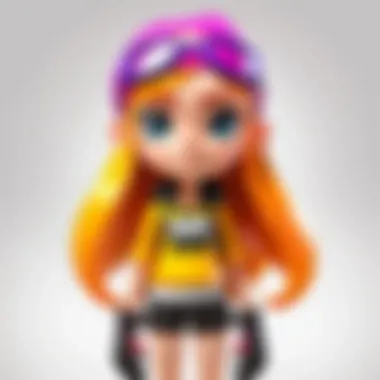
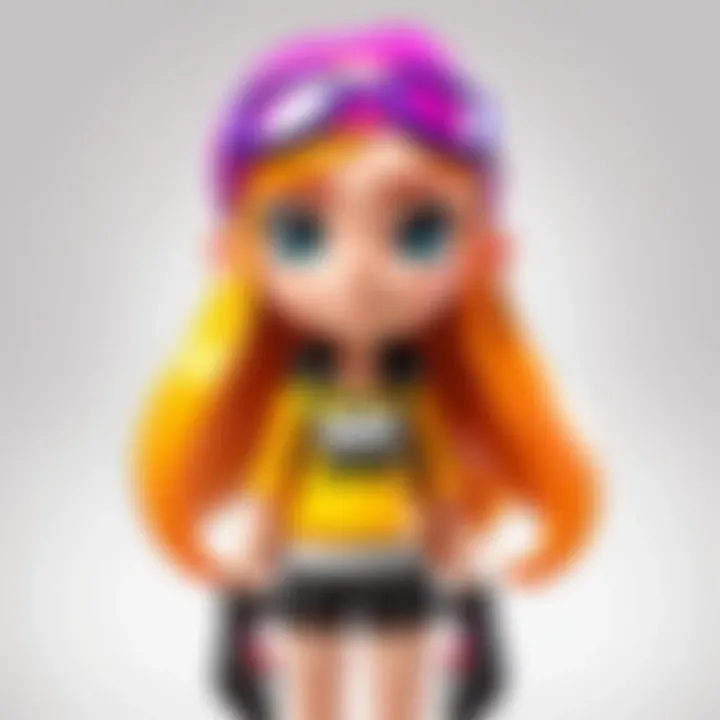
The game’s design invites both casual and experienced players, allowing for a fun yet competitive environment. The multiplayer mode is especially noteworthy, as it encourages players to strategize while collaborating with teammates.
Release and Reception
Upon its release on May 28, 2015, Splatoon was well-received by critics and players alike. It was praised for its innovative approach to the shooter genre, catchy art style, and engaging gameplay. Reviewers commended the game for its creativity and fresh take on multiplayer interactions.
The game achieved commercial success, selling millions of copies within the first year. Players appreciated its emphasis on teamwork and the absence of voice chat, which encouraged communication through gameplay. Notably, community engagement through social media platforms, such as Facebook and Reddit, further emphasized its impact within the gaming culture. The success of Splatoon has made it a reference point in gaming discussions, marking a shift toward family-friendly shooter games while appealing to a wide demographic of players.
Game Mechanics
Understanding game mechanics is crucial to appreciating Splatoon for the Wii U. They define how the game operates and how players interact with it. A solid grasp of these mechanics enriches the gaming experience and informs strategies in competitive situations. Game mechanics contribute significantly to player engagement and retention, which translates into community building around the title.
Core Gameplay Features
Splatoon introduces a unique blend of action and strategy through its core gameplay features. Players assume control of Inklings, who can transform between humanoid and squid forms. This transformation allows for different movement styles, including swimming through ink for speed and evasion. The use of ink is fundamental. Players shoot colored ink not only to defeat opponents but also to cover terrain, which provides tactical advantages.
The game emphasizes objective-based gameplay rather than simply aiming for kills. Modes like Turf War and Splat Zones require players to consider map coverage, teamwork, and strategic placement. Winning is not solely about individual skill but also about collaborative tactics and resource management.
Character Customization
Character customization in Splatoon enhances player identity and personalization. Players can choose from various outfits, each bringing distinct benefits. These benefits include boosts to speed, ink usage and tactical advantages in battles. The options allow players to find a style that fits their approach.
Customization goes beyond aesthetics. It plays a strategic role in gameplay. Selecting the right combination of gear can significantly impact performance in competitive play. Gear abilities can enhance play style, whether players prefer offensive or defensive strategies. This aspect creates a layer of depth, encouraging experimentation and personalized approaches.
Map Design and Strategy
Map design in Splatoon is crafted to facilitate dynamic gameplay and promote strategic thinking. Each map presents unique layouts, obstacles, and opportunities. Understanding these elements is essential for success. Different maps encourage various approaches and team compositions, forcing players to adapt their strategies.
Players must learn to use the environment effectively, such as seeking cover or using high ground advantageously. Well-designed maps support not only individual skill but also encourage cooperation among team members. Mastery of map layouts can change the outcome of a match, highlighting the importance of strategic planning in conjunction with mechanical skills.
"In Splatoon, the ink covers both the battlefield and the strategies behind winning. Every stroke of ink can define victory or defeat."
In summary, the game mechanics in Splatoon are integral to the overall experience. The core gameplay features facilitate unique combat dynamics, while character customization adds personal depth. Finally, strategic map design compels players to think critically about their approach to each match. These elements combined demonstrate why Splatoon remains a key player in the gaming landscape.
Technical Specifications
Understanding the technical specifications of Splatoon for the Wii U is crucial for comprehending how its design decisions impact gameplay and player experience. Specific elements within this sector, such as graphics, performance, user interface, and controls, play an essential role in defining how the game engages users. For tech-savvy consumers and gamers, these specifications highlight the strengths and limitations of the title, ultimately informing their purchasing decisions. Examining these key aspects allows us to appreciate the development choices made by Nintendo and their effects on the final product.
Graphics and Performance
The graphical quality of Splatoon is a defining feature, demonstrating what the Wii U could achieve in an era dominated by high-definition competition. The vibrant art style stands out, utilizing bright, saturated colors and unique character designs that resonate well with the game’s overall aesthetic. With a resolution of 720p, the visuals are optimized for the Wii U, with smooth framerates that maintain gameplay fluidity even in more chaotic moments.
One of the benefits of the graphical choices is the Ink mechanic. Players can shoot ink and navigate in it, the fluid animations linked with this mechanic enhance the immersion. Performance-wise, players experience minimal lag or frame drops during intense matches, a testament to the efficient coding and design practices of the development team.
The technical specifications in graphics directly correlate to player engagement. When a game looks appealing, players are more likely to be drawn into its world. Hence, Nintendo successfully forged a visually pleasing experience that works harmoniously with gameplay.
User Interface and Controls
The user interface (UI) of Splatoon is intuitive and designed specifically for the game’s unique mechanics. The layout is streamlined, with essential information clearly presented on screen without clutter. This ensures players can focus on the fast-paced action without distraction. The main menus and matchmaking screens maintain the game’s playful theme, using engaging graphics and lively animations.
Controls are tailored for the Wii U GamePad, enhancing the player's ability to aim and navigate. The use of motion controls for aiming is notable, allowing for quick adjustments and an increased sense of precision. While players have the option to bypass these motion controls, many find them integral to mastering gameplay. The tactile feedback from the controller adds an extra layer of immersion, creating more responsive interactions with the game world.
Important Note: The balance between graphic fidelity and smooth performance is crucial in competitive gaming. A game that features high-quality graphics but suffers from lag can severely hinder the player's experience.
In summary, the technical specifications of Splatoon are pivotal. A focus on graphics and performance heightens the overall experience, while an intuitive interface and responsive controls allow players to fully engage with the game.
Cultural Impact
The cultural impact of Splatoon cannot be understated, as it has carved out a distinct space within the gaming landscape. The game not only showcases innovative gameplay but also reflects broader societal themes and trends. This section examines how Splatoon has influenced the gaming community and its significance in the realm of merchandising and branding.
Influence on Gaming Community
Splatoon has significantly shaped the dialogue around multiplayer gaming. One of the most notable aspects is its emphasis on teamwork and collaboration. Unlike many competitive shooters, this game rewards strategic partnerships over individual prowess. This shift in focus fosters a sense of belonging among players.
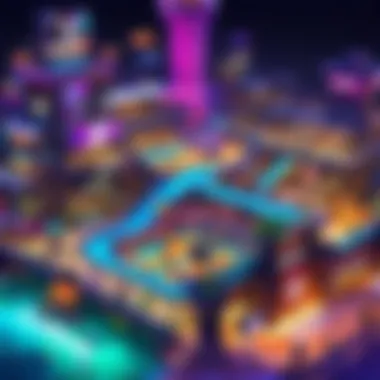
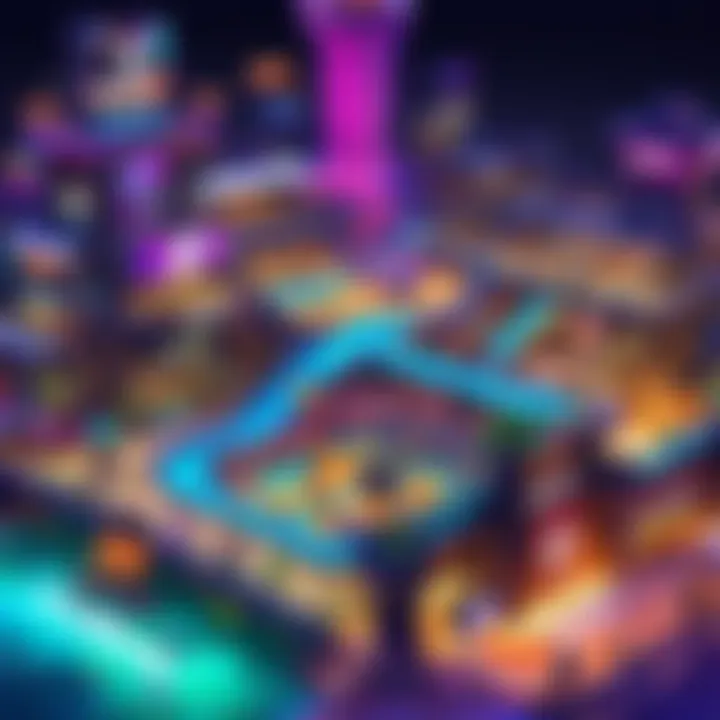
Moreover, Splatoon has introduced non-traditional mechanics, such as turf war battles, that challenge conventional notions of competition. Players engage in a vibrant mix of combat and territorial control instead of simply achieving a kill count. This nuanced approach invites a wider audience, including younger players, to participate in the competitive landscape.
The game's unique aesthetic and mechanics also sparked a vibrant fan culture. Players share strategies, artwork, and memes through platforms like reddit.com and facebook.com. Such community engagement not only enhances the game experience but also contributes to its longevity.
“Community interaction plays a crucial role in sustaining interest in the game; players feel like they are part of something larger.”
Merchandising and Branding
The branding strategy behind Splatoon highlights its success in creating a recognizable identity. From branded apparel to action figures, the merchandise has expanded beyond the game itself. Items like Splatoon amiibo provide additional content and serve as collectibles, bridging the gap between gaming and consumer culture.
Furthermore, Nintendo has effectively used Splatoon as a cornerstone in their marketing efforts. The game prominently features in events, merchandise, and as part of esports discussions. Such branding not only reinforces player allegiance but also cements its status in pop culture.
The game's bright colors and themes resonate well with audiences, making it visually appealing on various platforms. The distinctive character designs and art style have inspired a range of products, creating an ecosystem of fan-driven merchandising ventures. Consequently, this has enabled Splatoon to maintain a significant presence in both gaming and broader cultural contexts.
Competitive Scene
The competitive scene surrounding Splatoon has evolved significantly since the game's release. It plays a crucial role in the way players engage with the game, providing a structure for both casual and hardcore enthusiasts. This environment not only enhances the gaming experience but also fosters a sense of community among local and global players.
Esports and Tournaments
Esports has become a focal point in the gaming landscape, and Splatoon is no exception. The game's unique mechanics and vibrant aesthetics have made it an appealing choice for competitive play. Numerous tournaments have sprung up, attracting players from diverse backgrounds who showcase their exceptional skills.
Events such as the Splatoon World Championship have highlighted this engagement. They provide platforms for talented players to compete at high levels, pushing each other to develop innovative strategies and refine their skills. These tournaments not only elevate the game's status but also build camaraderie among players.
The competitive aspect benefits players in various ways:
- Skill Development: Engaging in competition fosters improvement, as players learn from their opponents and adapt their strategies.
- Community Building: Tournaments create opportunities for players to connect, forming lasting friendships and alliances.
- Recognition: Success in these events can lead to sponsorships and career opportunities, further motivating players.
Community Organizing
Community organizing is another essential element of the Splatoon competitive scene. Local groups and online forums have sprung up to create spaces where players can share tips, host games, and organize tournaments.
Platforms like Reddit and dedicated Facebook groups have become hubs for interaction. Players exchange strategies, post about upcoming events, and provide feedback on each other's gameplay. This grassroots approach encourages inclusivity, allowing everyone, regardless of skill level, to participate in the competitive scene.
Key benefits of community organizing include:
- Accessibility: It lowers the barrier to entry for new players who may feel intimidated by larger competitions.
- Tailored Events: Local groups can curate tournaments that cater to specific interests, whether casual play or serious competition.
- Resource Sharing: Players can easily find resources, such as guides, videos, and practice sessions, through organized community efforts.
"The competitive scene in Splatoon has really brought the community together, making it more than just a game. It's a space where we can grow and support each other."
In summary, the competitive scene of Splatoon is a vital component of its success. By fostering esports and strong community organizing, it enhances player engagement, cultivates talent, and strengthens bonds within the gaming community.
Updates and Expansions
Updates and expansions are critical components in the lifecycle of a game, particularly for a title like Splatoon on the Wii U. They enhance player experience, keep the community engaged, and ensure longevity of the game in a fast-evolving gaming environment. These updates not only fix issues but also introduce new features and content, which can fundamentally alter how players interact with the game.
The importance of updates and expansions lies in their ability to address player feedback. Developers can analyze player behavior and adjust gameplay accordingly, thus maintaining a healthy balance in multiplayer dynamics. Moreover, these enhancements can rejuvenate the player base, drawing back veterans and inviting new players. Understanding how Splatoon handled updates provides valuable insight into its success.
and Content Releases
Splatoon offered several downloadable content packs after its initial release. These packs introduced new maps, weapons, and game modes. The introduction of additional maps, for example, expanded the strategic possibilities for players, making gameplay more varied and exciting.
Some notable features from DLCs included:
- New Weapons: Each weapon type often required unique strategies and could shift the balance of play.
- Exclusive Maps: New territories introduced fresh tactical elements and forced players to adapt to new environments.
- Game Modes: Variations in game modes kept the gameplay experience lively and prevented stagnation.
These expansions also presented an opportunity for Nintendo to engage its community. Events tied to new content often featured special challenges or unique rewards. This not only incentivized players to purchase DLC but also reinforced community interaction.
Patches and Updates Overview
Patches and updates were regularly released for Splatoon, addressing bugs, improving game mechanics, and balancing weapons. Regular maintenance of the game ensured that players faced issues such as lag or weapon imbalances promptly resolved. This agile response was essential in maintaining player trust and satisfaction.
Key elements of the patching strategy included:

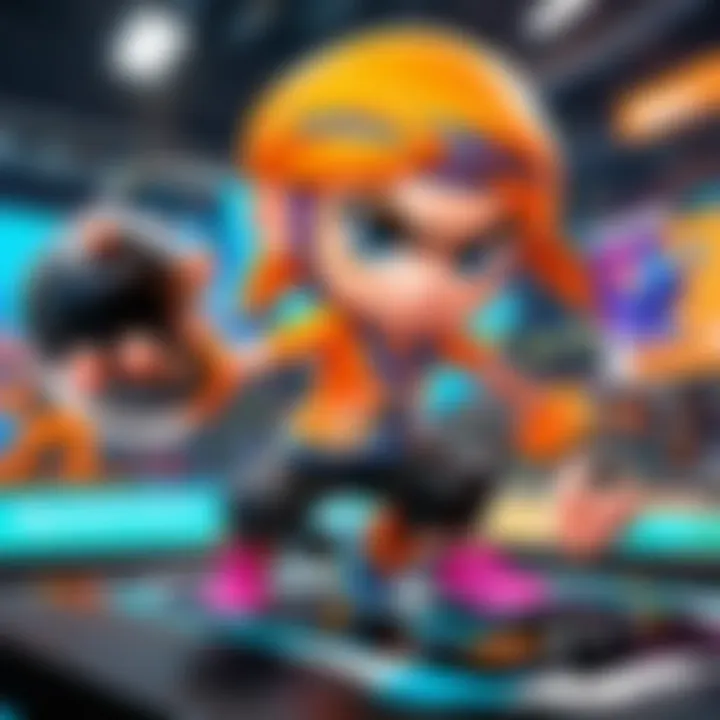
- Bug Fixes: Players benefit greatly when game-breaking issues are resolved swiftly.
- Weapon Balancing: Adjusting statistics on weapons helped maintain a fair playing field.
- Gameplay Enhancements: Occasional tweaks to mechanics kept the game fresh.
"Continuous updates reflect a developer's commitment to their player base, encouraging long-term allegiance to the title."
Comparative Analysis
In this section, the comparative analysis aims to contextualize Splatoon within the broader landscape of multiplayer games. It is essential to understand how these comparisons can illuminate the unique aspects of Splatoon, shaping the experiences of players and guiding future developments in similar titles. By analyzing it against other multiplayer games, we gain insight into its design choices, user engagement, and community interactions. Given the advancements in gaming technology and player expectations, these comparisons also help to highlight the features that distinguish Splatoon from its competitors.
Splatoon vs. Other Multiplayer Titles
When evaluating Splatoon alongside other multiplayer games like Call of Duty: Modern Warfare or Fortnite, several elements come into focus. Unlike traditional shooters focused on realism, Splatoon employs a vibrant, ink-based combat system that creates a distinctive aesthetic and a different gameplay dynamic. Player abilities to transform between humanoid form and squid form afford unique movement and strategy that challenges conventional strategies seen in competitive shooters.
Moreover, the game's emphasis on team-based objectives rather than individual kill counts shifts how players perceive success and skill. This encourages more cooperative gameplay, promoting a sense of community among players.
Key considerations when comparing include:
- Play style: Splatoon’s ink-splatting mechanics allow for diverse tactics and team compositions.
- Visual Style: A more family-friendly and colorful approach distinguishing it from darker themes in typical war games.
- Game Modes: The existence of modes like Turf War, which focuses on territory control, contrasts sharply with deathmatch-oriented modes in other games.
In essence, Splatoon creates a fresh experience, engaging both casual gamers and competitive players.
Unique Selling Points
Splatoon stands apart due to its unique selling points that cater to various segments of the gaming audience. Some compelling selling points include:
- Innovative Gameplay Mechanics: The core mechanic of using ink for movement, combat, and even hiding adds depth to tactical play. The ability to use the environment creatively enhances engagement.
- Character Customization: Players can personalize their in-game avatars, creating a connection to their characters, which can enhance the overall gaming experience.
- Community Engagement: The development team’s commitment to updates and events fosters a strong community atmosphere. Players feel invested in shared experiences and seasonal changes, which keeps the gameplay fresh.
- Cultural Integration: Incorporates youth culture themes, from fashion to music, which can resonate strongly with a younger audience.
Player Base and Demographics
Understanding the player base and demographics of Splatoon on the Wii U offers valuable insights into its ecosystem and overall success. The game appeals to a wide range of players due to its unique style and strategic gameplay. Demographics can inform developers about who plays the game and what these players value, which helps shape future development and marketing strategies. By analyzing who engages with Splatoon, one can identify key patterns that reflect broader trends in gaming.
Understanding the Audience
The audience for Splatoon is notably diverse. Many players are younger gamers, attracted by vibrant colors and engaging competition. However, there is also a significant portion of older players who appreciate the game's innovative mechanics. Here are some factors that define the audience:
- Age Groups: The game sees a significant amount of play from children and teenagers, but adults also form a notable part of the player community.
- Gender Representation: Splatoon does a commendable job of appealing to both male and female gamers, promoting inclusivity in a space where representation is often lacking.
- Cultural Background: The game's varied art style draws in players from different cultural contexts, making it not just a game, but a cultural phenomenon.
Moreover, understanding the motivations behind gameplay is essential. Players often cite the desire for personal expression and social engagement as key reasons for their affinity towards Splatoon. Online multiplayer matches foster community and competition, making it an attractive option for many.
Player Retention Strategies
To maintain engagement and ensure longevity within its player base, Splatoon implements several thoughtful strategies. Retaining players is crucial, considering the competitive landscape filled with other popular titles. Some of the effective strategies include:
- Regular Updates: This keeps the content fresh and exciting, encouraging players to return. New maps, gear, and game modes were regularly introduced post-launch.
- Community Events: These create a sense of belonging among players. Splatoon’s Splatfests, where players choose sides and compete for supremacy, are especially popular and cultivate community spirit.
- Customizable Experiences: By allowing players to customize their characters and play styles, the game promotes engagement. Players are more likely to stay engaged if they have a unique gaming identity.
By consistently addressing the needs of its player base, Splatoon has managed to retain interest and sustain a loyal community, which is essential for its ongoing success.
These strategies contribute to an ongoing cycle of retention, encouraging players not only to return but also to actively engage with and promote the game, fostering a vibrant, dynamic community that remains invested in the Splatoon universe.
Ending
In the analysis of Splatoon for the Wii U, the conclusion serves a crucial role in synthesizing the key takeaways from the entire discussion. This section not only summarizes the critical elements examined throughout the piece but also highlights the enduring impact of the game on both its players and the gaming industry.
Legacy of Splatoon on Wii U:
Splatoon has left an indelible mark on the gaming landscape since its launch. It redefined the way multiplayer shooting games operate, moving away from the traditional perspectives of battle arenas to a more vibrant, paint-splashing experience. By prioritizing teamwork over sheer shooting skills, it encouraged cooperative gameplay in a unique way. The game’s aesthetic and its playful take on competition resonated with many, creating a loyal fanbase that continues to celebrate its impact.
Furthermore, the game promoted inclusivity by appealing to a diverse age range, allowing players of all backgrounds to engage with its mechanics. The characters, known as Inklings, provided representation that attracted younger audiences, while competitive modes engaged seasoned gamers. This duality in gameplay style contributed to its legacy, making Splatoon not only a staple of the Wii U library but also a cultural touchstone in gaming.
Future Prospects in Gaming:
The influence of Splatoon goes beyond its initial success on the Wii U. The game's unique features are now serving as a benchmark for future multiplayer titles. As game developers continue to seek innovative ways of attracting diverse audiences, aspects from Splatoon can be expected to influence new games.
In particular, the blend of competitive and casual play that Splatoon managed to achieve indicates a shift that many upcoming titles may attempt to replicate. Developers are likely to look at its community-oriented design, allowing for shared experiences in gameplay, which is increasingly becoming vital in today’s gaming environment. This shift will likely inform future projects, not just in Nintendo's portfolio but across various platforms.
With ongoing advancements in graphics and online capabilities, the possibilities for sequels or spin-offs seem boundless. Game mechanics that facilitate adaptability to player preferences and encourage creativity, much like in Splatoon, will likely shape the next generation of multiplayer games.
Splatoon exemplifies how interactive play can bridge gaps between competitive and casual gaming worlds, making it a source of inspiration for the entire industry.
This forward-looking perspective reinforces the importance of understanding Splatoon's mechanics and societal relevance, showcasing its position as a mainstay in the evolution of gaming.







